Hello there, Build-It community! For this post, I won't be building anything, exactly, but I will be showing off some lumber I'm making, and I will eventually be using that lumber to build things.
I decided to post this here because you guys showed a lot of love to the sawmill posts, and I have plenty of other content for the Homesteading community, especially with spring peeking around the corner. I decided to throw this particular post together because it is quick, and because @ligayagardener mentioned a specific preference for bandsaw porn. So, without further ado...
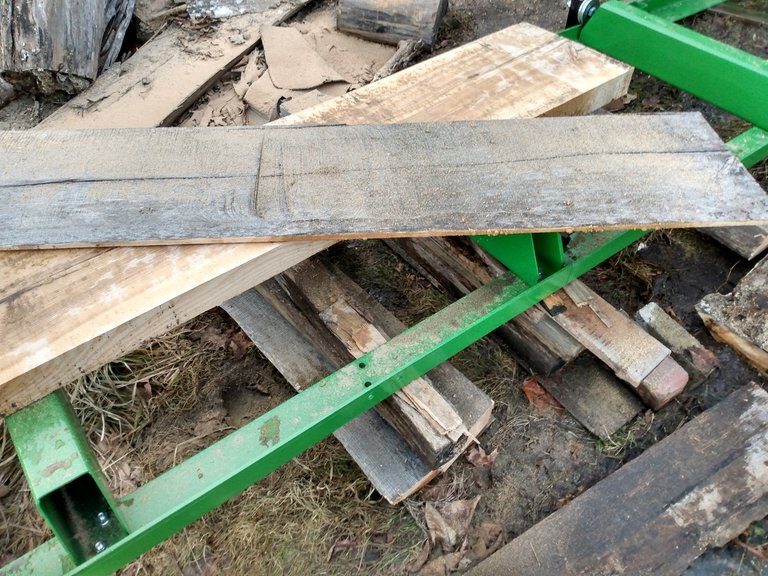
This was my first cut that was near the full 20" capacity. That big dugout part in the middle of the top slice is from where this was initially cut with the chainsaw mill, and the cut didn't go full depth. You can read more about that in this post from a couple years ago.
I was able to trim that whole old slab down to this nice little chunk of lumber in less time than it would have taken me to make just one cut with the chainsaw mill, and it was almost no physical effort at all, aside from positioning the lumber on the mill. I will get two very sturdy stair treads from this board. Now I'll just need about 18 more.
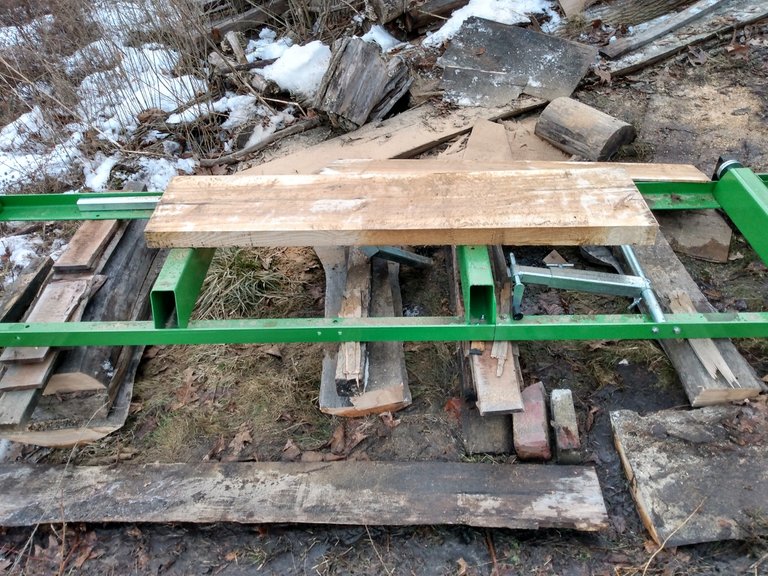
The cut from the bandsaw mill is definitely much smoother than the typical cut from the chainsaw. Although a couple of my homemade milling chains left a pretty smooth cut with the 20" bar, they still weren't this smooth. I could definitely plane these with just one or two passes per side.
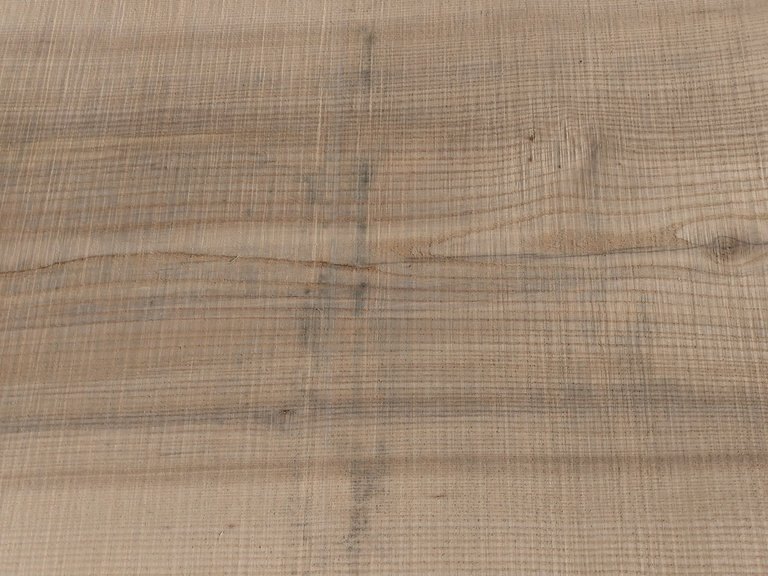
These ash slabs have been sitting outside for years now, and I was a bit worried that there would be more rot to them. Some of the boards and logs have fared better than others over the years, but I don't think I'm going to lose much of any of it.
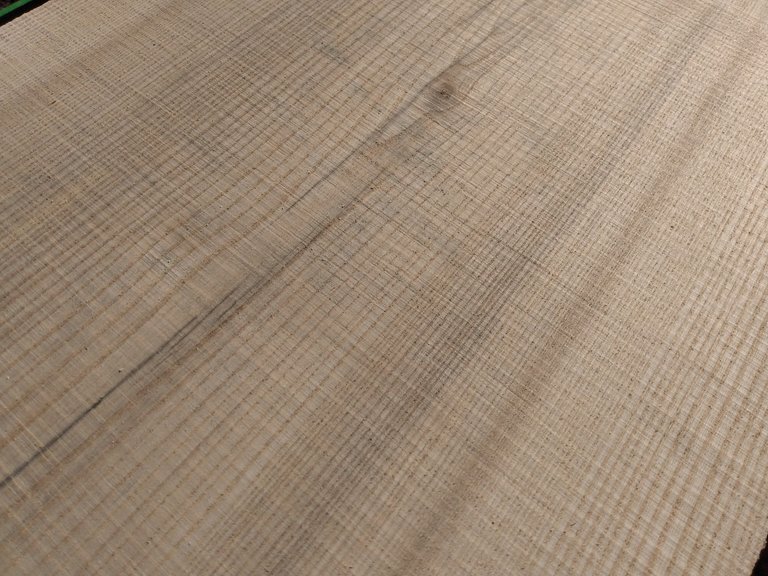
Most of the pieces that have been sitting as whole logs have some degree of spalting. This is a fungal infection that discolors the wood, often with beautiful patterns. It's highly sought after in some woods, like maple, but in ash (at least this variety, whichever it is) the wood loses a lot of its strength when this happens. I still like the look, though, and I'm hoping to be able to use some of these spalted pieces for siding.
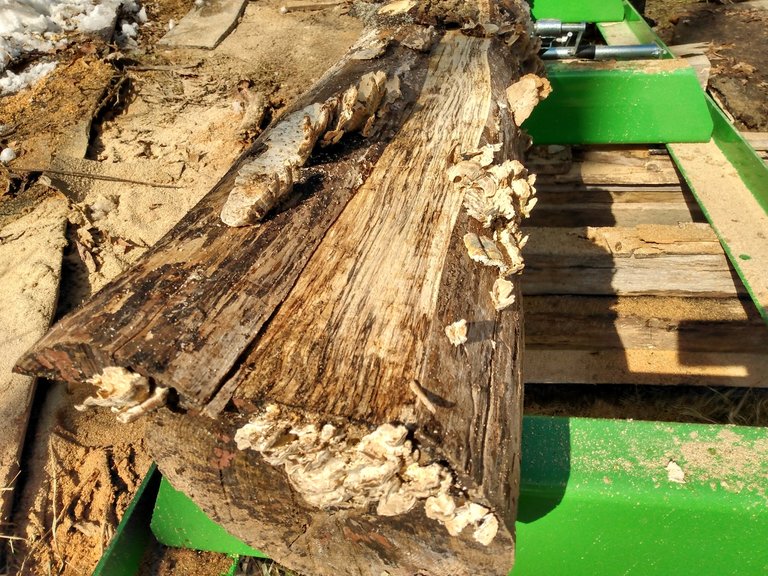
In the picture below you can see what this looks like on the outside of the log. On this wood the colors are mostly black and shades of cream, but I do frequently get some red shades, and occasionally a little blue or purple.
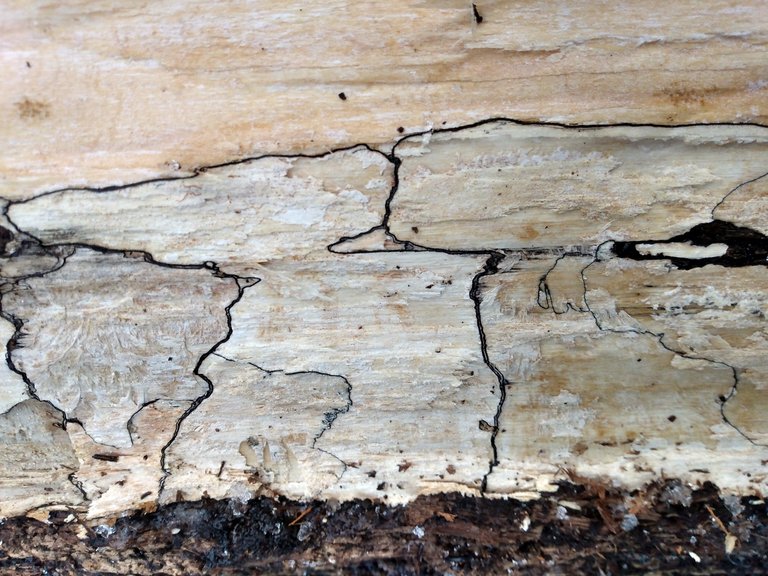
Sometimes it will only affect the grain of the wood, like in the picture below. Though I enjoy this effect, it's the chaos that gets introduced to the wood that really draws me to spalted lumber.
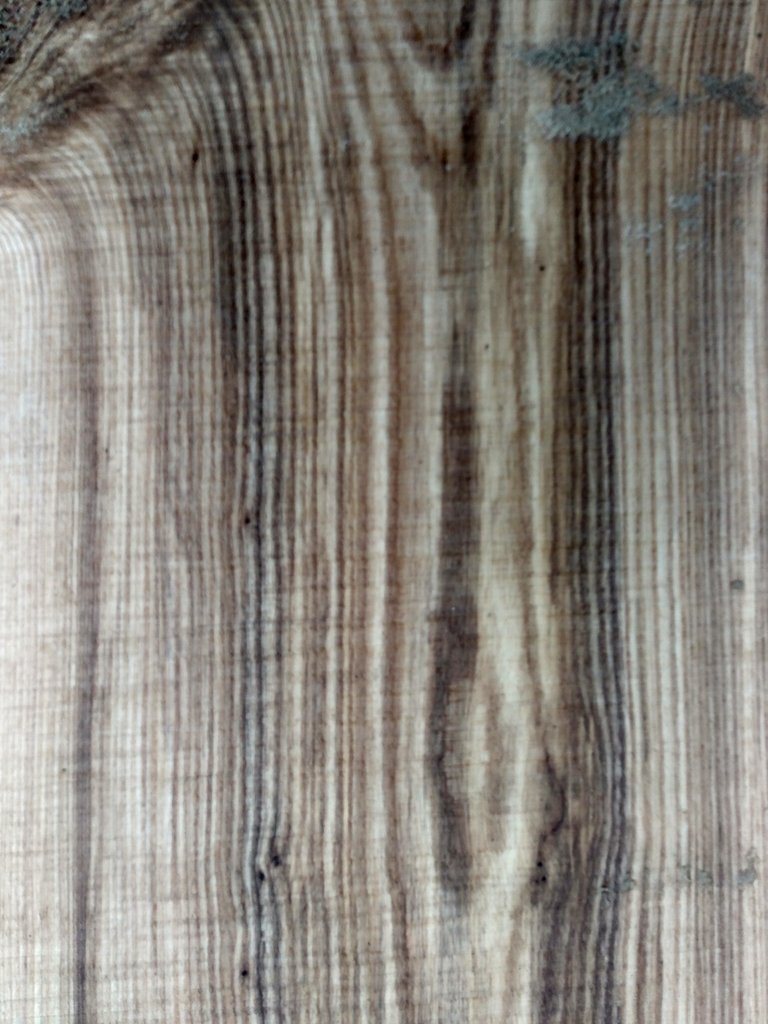
The patterns in the picture below are a better representation of what I like to see. Staring at these odd natural Rorschach blots is just mesmerizing for me, like staring at a lava lamp.
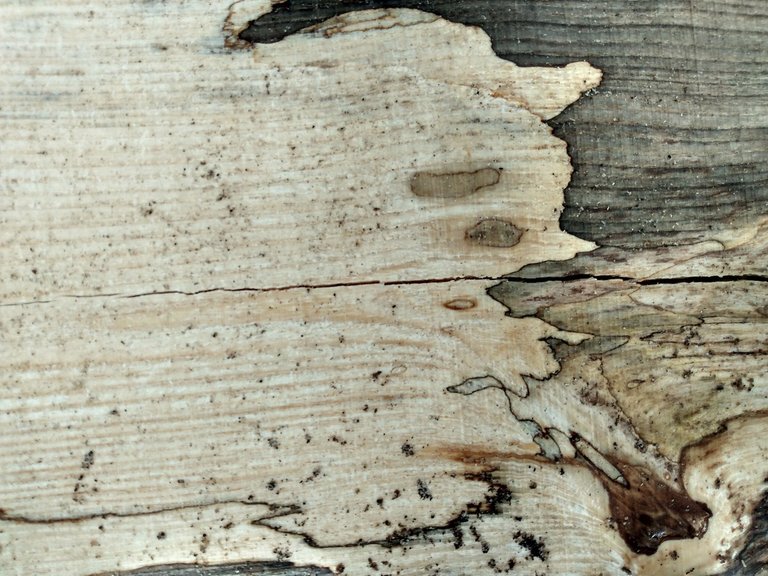
As I mentioned, this ash gets a lot weaker after spalting, but it also gets a lot lighter. It becomes quite a lot more like balsa wood, even in the way it breaks. This piece cracked while I was tossing the boards around, then broke cleanly when I pulled on it with just a little force.
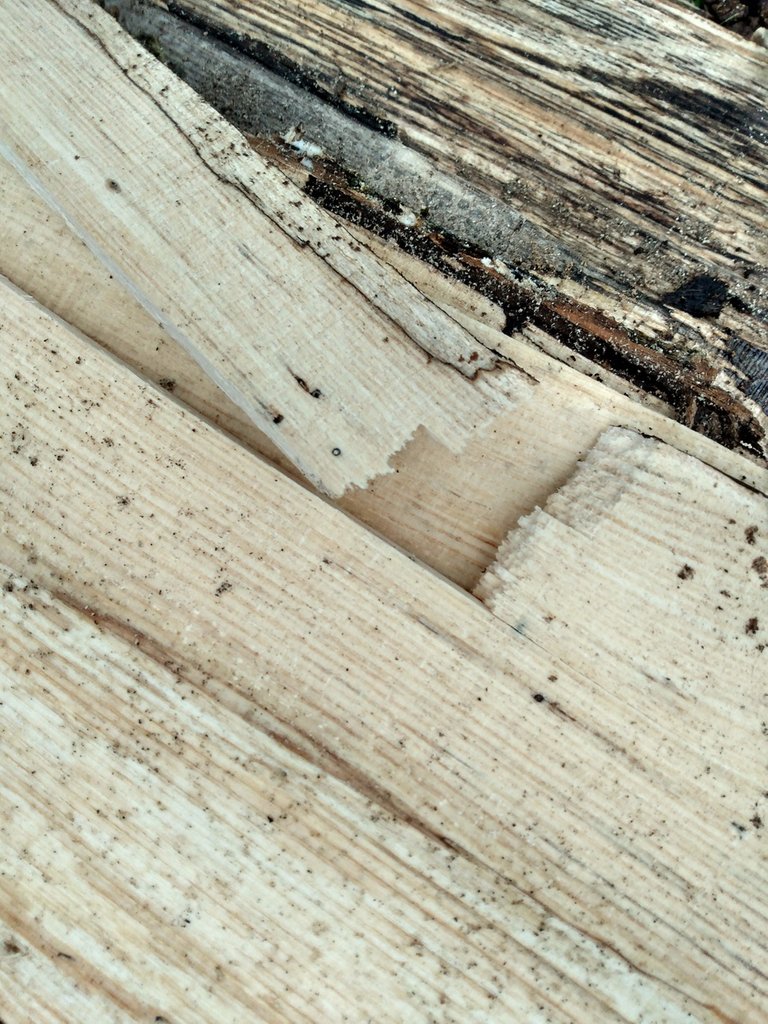
The picture below shows an example of the red coloring I often see. I have no idea what factors affect how the wood gets colored. I do know a little bit about encouraging wood to decay like this, but around here it's a pretty easy accident.
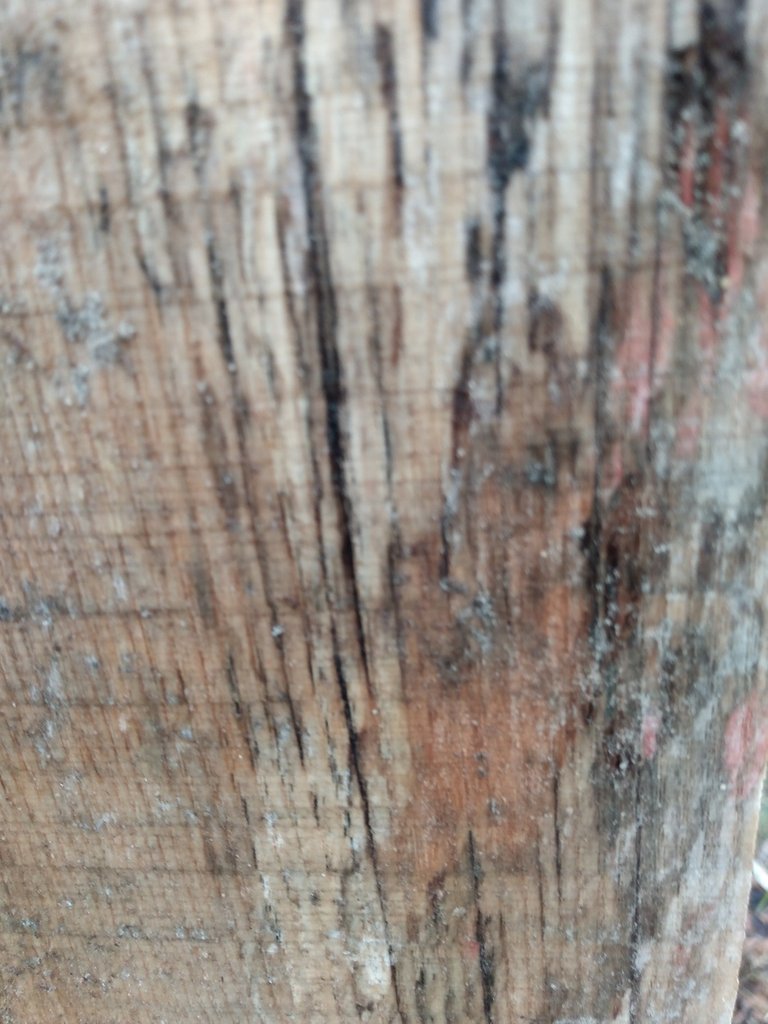
I haven't gotten an awful lot cut yet; it took me some time to finish setting up the saw, and most of my logs are still frozen to the ground. I am very happy with how the saw has performed, though, and I'm looking forward to lots of lumber projects in my near future.
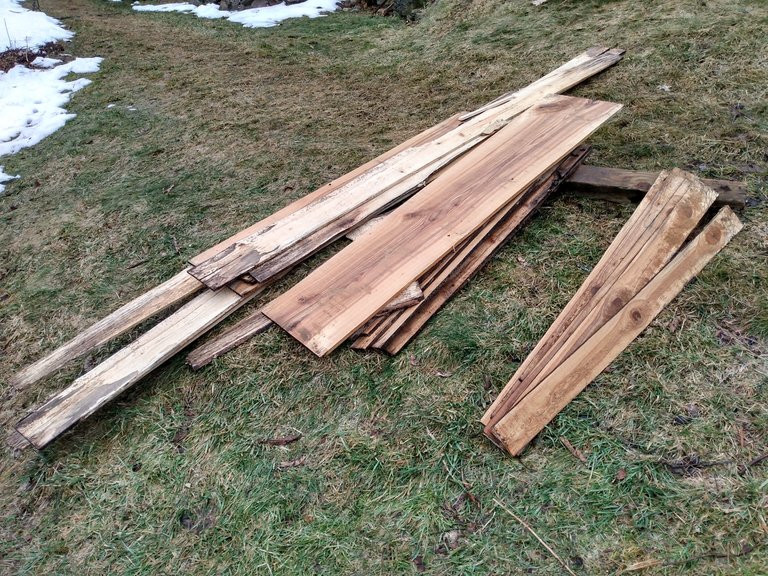
I hope you all enjoyed the pics as much as I enjoyed making them! I'll be back soon with more details about finishing the saw setup and what it takes to turn a tree into lumber.

